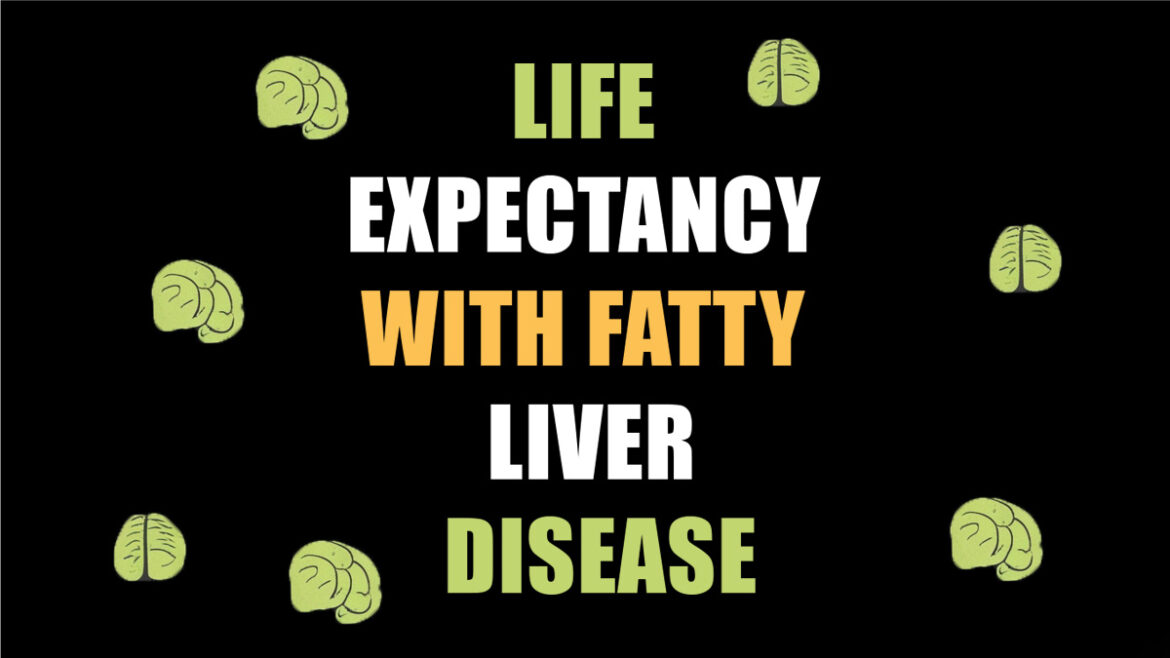Hepatic steatosis, another name for fatty liver disease, is a common disorder marked by the buildup of extra fat in the liver. Depending on the severity of the illness and the existence of additional health issues, this condition can have a major effect on life expectancy. This thorough post will go over the many facets of fatty liver disease, how it affects life expectancy, and what can be done to control and lessen its consequences.
Understanding Fatty Liver Disease
Non-alcoholic fatty liver disease (NAFLD) and alcoholic fatty liver disease (AFLD) are the two primary forms of fatty liver disease. The more prevalent variant, NAFLD, is frequently linked to metabolic syndrome, obesity, and type 2 diabetes. On the other side, binge drinking too much alcohol leads to AFLD.
Non-Alcoholic Fatty Liver Disease (NAFLD)
NAFLD is additionally separated into two subtypes:
Steatosis, also known as simple fatty liver, is a disorder in which the liver accumulates fat without experiencing severe inflammation or injury. If appropriately controlled, it is typically regarded as benign and has little effect on life expectancy.
Non-Alcoholic Steatohepatitis (NASH): NASH is characterized by the buildup of fat in addition to inflammation and damage to liver cells. Life expectancy can be greatly impacted by this illness as it can lead to more serious liver disorders such cirrhosis, fibrosis, and liver cancer.
Alcoholic Fatty Liver Disease (AFLD)
Overindulgence in alcohol contributes to AFLD by causing the liver to become fat. The amount and duration of alcohol use affect how severe AFLD is. Alcoholism that persists can cause cirrhosis, fibrosis, and alcoholic hepatitis, all of which reduce life expectancy.
Impact of Fatty Liver Disease on Life Expectancy
Depending on the kind and severity of the disease as well as the existence of concomitant medical disorders, the effect of fatty liver disease on life expectancy varies greatly.
Basic Fatty Liver
The prognosis is usually good for those with uncomplicated fatty liver. The illness is effectively manageable with lifestyle changes such frequent exercise, a balanced diet, and weight loss. Simple fatty liver patients usually do not have a markedly shorter life expectancy as long as they follow good lifestyle habits and stay away from risk factors like binge drinking and eating poorly.
Non-Alcoholic Steatohepatitis (NASH)
If left untreated, NASH is a more serious illness that can cause substantial liver damage. The development of cirrhosis and liver fibrosis from NASH can significantly shorten life expectancy. Studies show that compared to people with basic fatty liver, those with NASH had a greater risk of liver-related mortality. Early detection and vigorous treatment of risk factors like obesity, diabetes, and hypertension are essential to extending the life expectancy of NASH patients.
Cirrhosis and Liver Cancer
Both NAFLD and AFLD can cause cirrhosis, a serious disorder that is a late stage of liver fibrosis. Because of consequences like liver failure, portal hypertension, and an elevated risk of liver cancer, cirrhosis shortens life expectancy. People who have cirrhosis need to be closely monitored by doctors and may eventually require a liver transplant. The prognosis is further complicated by the development of liver cancer, which frequently results in a significant reduction in life expectancy.
Factors Influencing Life Expectancy
Several factors influence the life expectancy of individuals with fatty liver disease:
Severity of Liver Damage
One important factor in determining life expectancy is the degree of liver damage. The prognosis for those with mild liver steatosis is typically better than that of people with severe cirrhosis or fibrosis.
Comorbid Conditions
Life expectancy can be adversely affected by the coexistence of comorbid disorders such as obesity, type 2 diabetes, hypertension, and cardiovascular diseases. Improving the prognosis of individuals with fatty liver disease requires proper management of these diseases.
Lifestyle Choices
The development of fatty liver disease is significantly influenced by lifestyle decisions. A good diet, frequent exercise, and abstaining from alcohol can all significantly extend one’s life. Particularly, it has been demonstrated that losing weight reduces inflammation and liver fat, which slows the disease’s course.
Early Diagnosis and Treatment
Improving life expectancy for those with fatty liver disease requires early diagnosis and prompt treatment. Frequent imaging exams and liver function testing can help identify the illness early on and enable timely treatment.
Management and Treatment
Treatments for fatty liver disease include medication, lifestyle modifications, and ongoing monitoring. The following are some essential tactics for treating the illness:
Lifestyle Modifications
- Healthy Diet: The management of fatty liver disease requires a well-balanced diet high in fruits, vegetables, whole grains, and lean proteins. Liver fat content can be decreased by consuming fewer processed foods, sweets, and saturated fats.
- Weight Loss: It’s important to lose weight gradually if you’re overweight or obese. Research has indicated that a substantial decrease of 5–10% in body weight can effectively lower inflammation and liver fat.
- Frequent Exercise: Physical activity on a regular basis enhances metabolic function generally and liver health in particular. Try to get in at least 150 minutes a week of moderate-to-intense activity.
- Avoiding Alcohol: Total abstinence from alcohol is required for those with AFLD. Reducing alcohol consumption is advised for people with NAFLD as well in order to stop additional liver damage.
Medical Treatments
- prescription: Although no particular prescription has been licensed to treat fatty liver disease, some medications may be taken to treat related diseases such high blood pressure, diabetes, and high cholesterol.
- Vitamin E: Supplementing with vitamin E may assist people with NASH have less inflammation in their livers, according to certain research. However, because of the possible adverse effects, it should only be used under medical supervision.
- Bariatric Surgery: To accomplish substantial weight loss and enhance liver health in severe cases of obesity-related fatty liver disease, bariatric surgery may be explored.
Regular Monitoring
- Liver Function Tests: Monitoring liver enzyme levels with routine blood tests can assist determine the state of the liver and identify any worsening of the problem.
- Imaging Studies: To assess liver fat content and identify fibrosis, imaging techniques such as MRIs, ultrasounds, and fibroscans are frequently employed.
- Liver Biopsy: To confirm the diagnosis and determine the degree of liver damage, a liver biopsy may be required in some circumstances.
Conclusion
A common ailment that can have a major impact on life expectancy is fatty liver disease, especially in its more severe forms like cirrhosis and NASH. However, results can be improved and life expectancy increased with early diagnosis, good risk factor treatment, and lifestyle changes. Patients with fatty liver disease should collaborate closely with their medical professionals to create a thorough care plan that is customized to meet their individual requirements.

